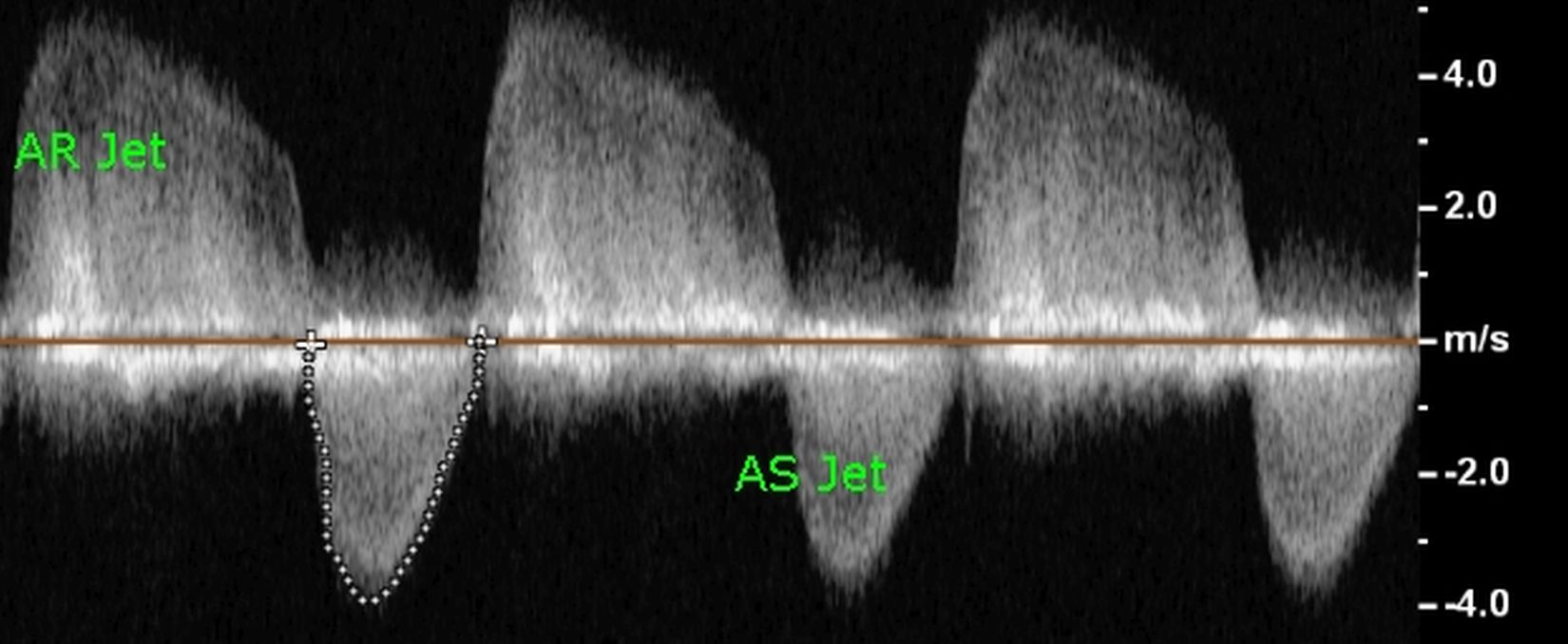Moderate AS, AR – Continuous wave Doppler
Moderate AS, AR – Continuous wave Doppler
Aortic stenosis jet has a peak gradient of 61 mm Hg and mean gradient of 33 mm Hg. Peak gradient derived from Doppler echo is different from the peak gradient derived on cardiac catheterization. Doppler echo estimates the peak instantaneous gradient while cardiac cath estimates the peak to peak gradient between the left ventricular and aortic pressure tracings. Aortic regurgitation jet is seen well during the entire diastole with good density, indicating at least moderate aortic regurgitation.
Even though we call the murmur of aortic regurgitation as early diastolic, as we can see here, the regurgitant flow is pan diastolic in chronic aortic regurgitation as there is a persistent pressure gradient between the aorta and left ventricle in diastole. In acute aortic regurgitation as there is no chance for the left ventricle to dilate and accommodate the regurgitant flow, the left ventricular diastolic pressure rises rapidly and equates with aortic diastolic pressure.
This Doppler tracing is guided by color Doppler imaging from the apical five chamber view. As the aortic flow is directed away from the left ventricular apex in apical 5C view, the AS jet is downwards. The regurgitant flow of AR being towards the left ventricular apex, is directed upwards in the continuous wave Doppler tracing. Pulsed Doppler is not useful for this study because the velocities are much above the aliasing limit of pulsed wave Doppler.

